What is DevSecOps?
DevSecOps (Development, Security, and Operations) is an extension of DevOps that integrates security practices into the DevOps processes. The goal of DevSecOps is to ensure that security is a shared responsibility throughout the entire software development lifecycle, rather than being an afterthought or a separate process handled only by a security team. By embedding security into the development and operations workflows, DevSecOps enables organizations to identify and address security issues earlier in the development process, improving the security posture of applications without sacrificing speed or agility.

Core Principles of DevSecOps
 Integrate security practices early in the software development lifecycle (SDLC). By addressing security during the design and development phases, teams can identify and mitigate vulnerabilities before code is deployed, reducing the risk of security issues in production.
Integrate security practices early in the software development lifecycle (SDLC). By addressing security during the design and development phases, teams can identify and mitigate vulnerabilities before code is deployed, reducing the risk of security issues in production.
Automate security testing and compliance checks within the CI/CD pipeline. This ensures that security measures are consistently applied without slowing down development processes, allowing for faster and more secure software delivery.
Foster a culture of collaboration among development, operations, and security teams. Security should be viewed as a shared responsibility, encouraging open communication and teamwork to address security concerns throughout the entire development process
Core Components of DevSecOps
| Component | Description |
|---|---|
| Shift-Left Security | Integrating security early in the development lifecycle to identify and fix issues sooner. |
| Automation of Security Testing | Using automated tools to perform security scans and vulnerability checks within CI/CD pipelines. |
| Security as Code | Automating security policies and configurations to enforce security consistently. |
| Continuous Monitoring and Feedback | Real-time monitoring to detect security incidents and provide feedback to developers. |
| Collaboration Across Teams | Ensuring that security, development, and operations teams work together to enhance security. |
Key Principles of DevSecOps
- Shift-Left Security: This principle emphasizes moving security earlier in the development process. Instead of addressing security issues after deployment, security considerations are integrated from the beginning of the design and development phases.
- Automation: Automating security checks and testing throughout the CI/CD pipeline allows teams to continuously monitor for vulnerabilities, ensuring security is maintained without slowing down development.
- Collaboration: DevSecOps encourages close collaboration between development, security, and operations teams, fostering a culture where security is considered everyone’s responsibility.
- Continuous Monitoring: Implementing real-time monitoring of applications and infrastructure helps identify security threats as they arise, allowing for prompt response and remediation.
Benefits of DevSecOps
- Early Detection of Vulnerabilities: By incorporating security measures at the start of the development process, organizations can identify and address vulnerabilities before they reach production.
- Reduced Risk: Continuous security assessments minimize the risk of security breaches, as potential threats are identified and mitigated proactively.
- Faster Time to Market: With automated security processes, teams can maintain rapid development cycles while ensuring that security is not compromised.
- Cost Efficiency: Identifying and fixing security issues early in the development lifecycle is significantly cheaper than addressing them post-deployment.
Key Practices in DevSecOps
- Threat Modeling: Assessing potential security threats and vulnerabilities during the design phase to guide secure development practices.
- Static Application Security Testing (SAST): Analyzing source code and binaries to identify vulnerabilities before the application is run, typically integrated into the CI/CD pipeline.
- Dynamic Application Security Testing (DAST): Testing running applications for vulnerabilities, often used to identify runtime issues that static testing might miss.
- Continuous Compliance: Ensuring that applications and infrastructure comply with regulatory standards and security policies through automated checks.
- Infrastructure as Code (IaC) Security: Managing and securing infrastructure configurations through code, allowing for version control, reproducibility, and automated validation of security best practices.
- Automated Security Scanning: Using tools to continuously scan for vulnerabilities in code repositories and dependencies to ensure that new vulnerabilities are identified and addressed promptly.
Tools Commonly Used in DevSecOps
- Version Control: Git, GitHub, GitLab
- CI/CD: Jenkins, CircleCI, GitLab CI
- SAST Tools: SonarQube, Checkmarx, Fortify
- DAST Tools: OWASP ZAP, Burp Suite
- Container Security: Aqua Security, Twistlock, Clair
- Secrets Management: HashiCorp Vault, AWS Secrets Manager
- Compliance Tools: Chef InSpec, OpenSCAP
Career Opportunities
DevSecOps represents a cultural and operational shift towards embedding security in every aspect of the software development process. By fostering collaboration between development, operations, and security teams, organizations can achieve faster, more secure software delivery while minimizing risks. If you have specific areas of DevSecOps you’d like to explore further, feel free to ask!

